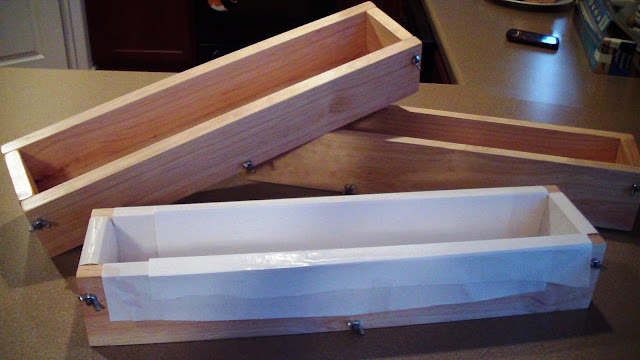Have you ever used soap? You may think you have, but are you sure? If soap leaves you dry, tight or itchy, then there is a good chance that what you have been using isn't soap. Did you know that grocery store soap is not soap?
Years ago, I remember being in a little shop that specialized in handmade soap. I remember thinking, these are all very pretty, and they smell nice, but what is the big deal? I thought, “A whole store full of just soap? What a waste. I can’t use soap anyway. It makes my skin dry and itchy and bothers my psoriasis.” So I patiently waited while the lady I was with browsed the selection and made her purchase.
A few years later, I went to the doctor with my kids for psoriasis and eczema. Our normal doctor was not in, and we needed to see a different doctor. Like I always did, I asked this doctor what soap we should use. I expected him to say Dove or Carress, like they normally did. This doctor's answer made my jaw drop. He said that if I knew anyone who made “old fashioned lye soap”, then we should use that.
I couldn't believe someone would recommend that! I had heard stories about old fashioned lye soap and it sounded pretty awful. I thought that lye soap was stinky and harsh and would eat your skin. This doctor explained to me that today's handmade soaps are the most gentle soaps available. He told me the bars I had been buying were not even soap at all. Most were actually detergents. He explained how a true soap is very gentle and beneficial to skin, and detergents are not.
If the only soaps you have used are the regular bars and body washes available in the grocery store, then you are washing with detergents. Detergents are great for washing dishes, but not so good on your skin. Have you ever used these bars and gotten that tight, dry, itchy feeling? Try a true soap, and that dry itchy feeling will go away.
Here are the ingredients of a leading bar made for sensitive skin. There are a few nice ingredients in this list, but most are harsh synthetics or chemicals.
Sodium Cocoyl Isethionate (Synthetic detergent), Stearic Acid (fatty acid), Sodium Tallowate (soap) , Water, Sodium Isethionate(Synthetic detergent) , Coconut Acid, Sodium Stearate (Synthetic detergent), Cocamidopropyl Betaine (Synthetic detergent), Sodium Cocoate (Soap) or Sodium Palm Kernelate (soap), Sodium Chloride (table salt), Titanium Dioxide (natural whitener), Sweet Almond Oil, Rosewood Oil (essential oil), Tetrasodium EDTA (water softener), Trisodium Etidronate(preservative), BHT (preservative), Cedarwood Oil (essential oil), Rose Oil (essential oil), Disodium Cocamido-MEA-Sulfosuccinate (synthetic detergent), Cetyl Alcohol (alcohol derived from fats), Tocopheryl Acetate (vitamin E).
I have had multiple friends come to me and tell me my soaps are so pretty, they wished they could use them. They said their skin was so sensitive or dry that they can't use soap. I explained the difference between the detergents they were familiar with, and a true soap like mine, they would reluctantly give it a try. Every time they have come back to me and told me how wonderful real soap felt on their skin, and how it even helped with whatever skin ailments they had.
So have you ever used soap? Read the ingredient list on whatever bar or body wash you use. If you see things like this list, you are not using soap.
Sodium Lauroyl isethionate
Sodium Laureth Sulfate
ammonium laureth sulfate
Sodium Lauryl Sulfate (SLS)
Ammonium Lauryl Sulfate
Ammonium Laureth Sulfate
Ammonium Xylene Sulfonate
TEA Lauryl Sulfate
Cocoyl Isethionate
Sodium Isethionate
Ccamidoproply Betaine
Now read the ingredients of ANY handmade soap and compare. If you have never used a handmade soap, then chances are you have never really used a real, pure soap. You owe it to yourself to give it a try.



























